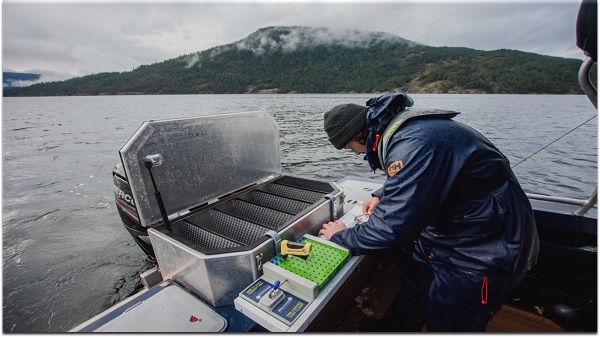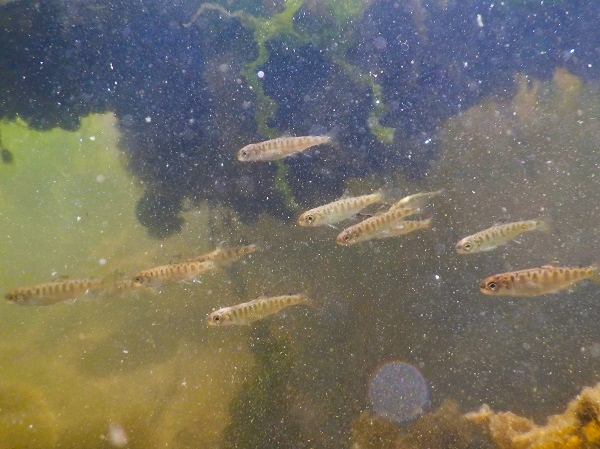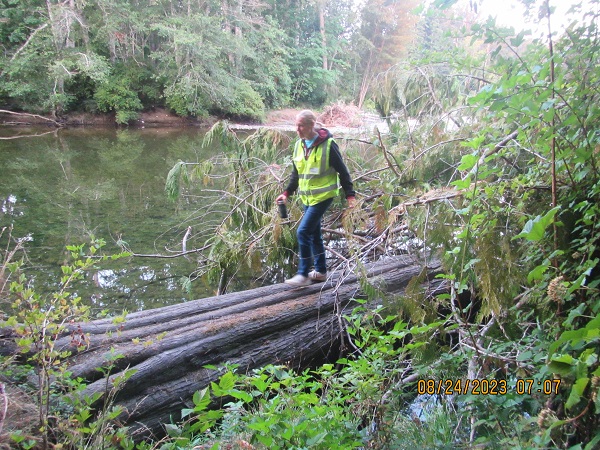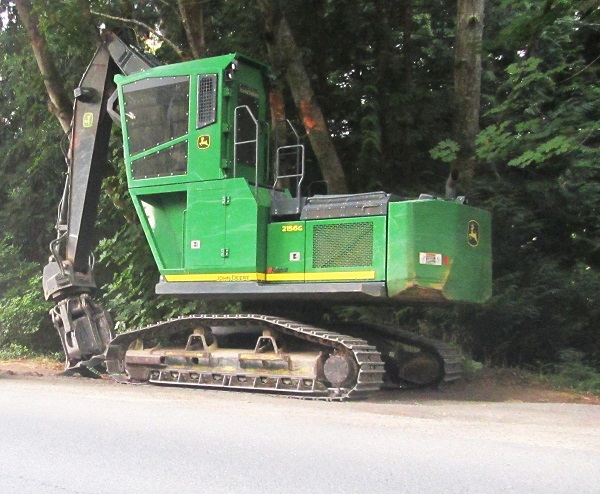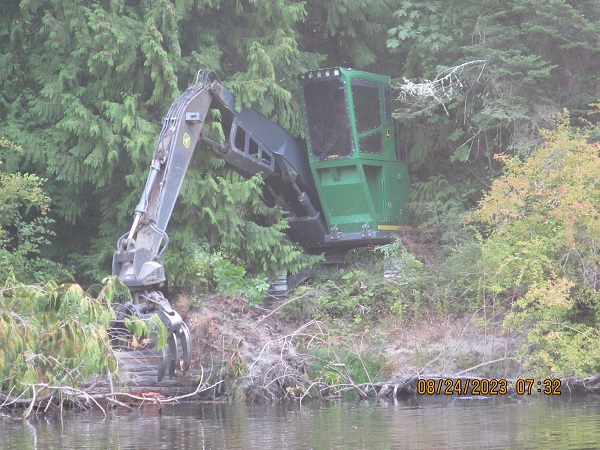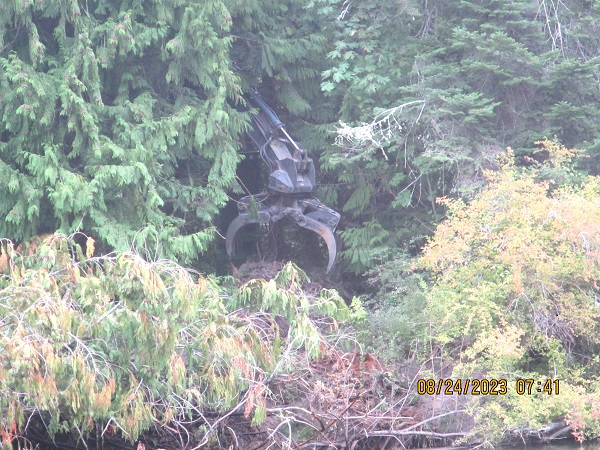Up A Creek With Our Friends
Wow, two big projects were completed in August and September on Shelly Creek. And they were led not by MVIHES but by our friends. How awesome is that?
First, the Snaw-naw-as First Nation replaced two very old culverts, each measuring 2 ft in diameter, with a skookum 8 ft culvert in Shelly Creek on the Shelly Farm (see photos below).
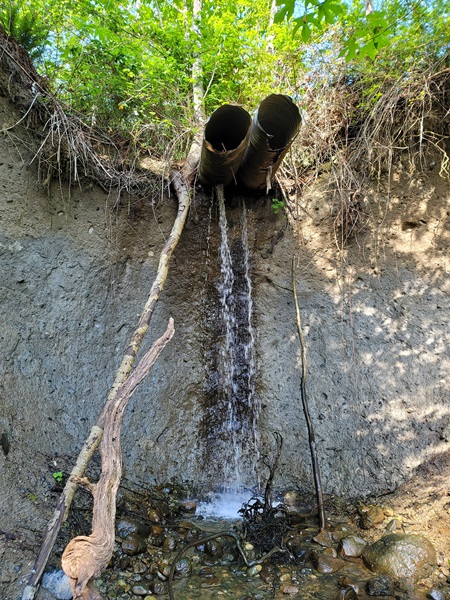
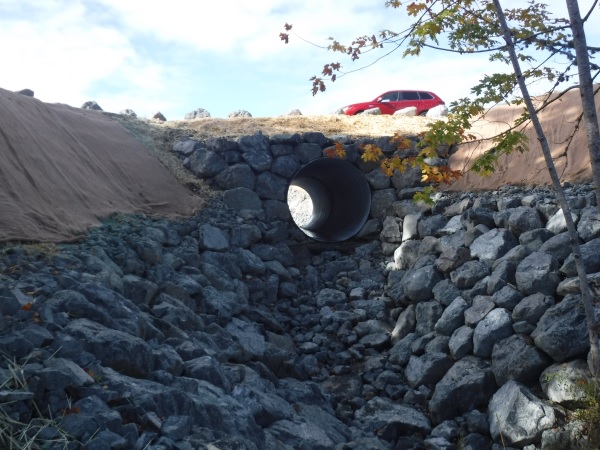
Old culverts hanging over ridge Shazam, that's a huge culvert!
The old culverts were located on a ridge upstream of the restoration work we completed in 2021 and 2022, as seen in the aerial view below.
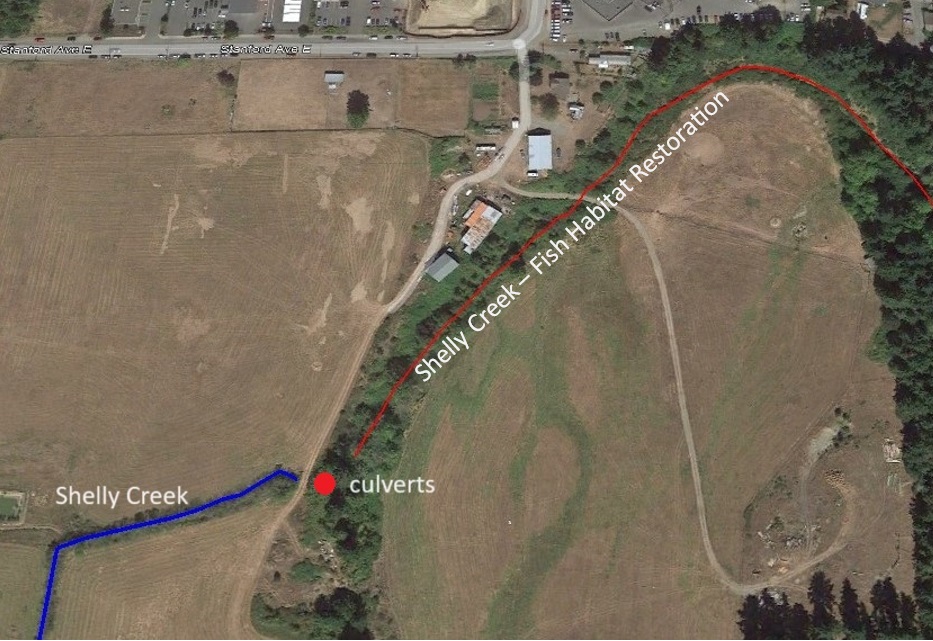
The old culverts were failing and causing erosion on the farm and sedimentation in the creek. Then there was the atmospheric river of November 2021.
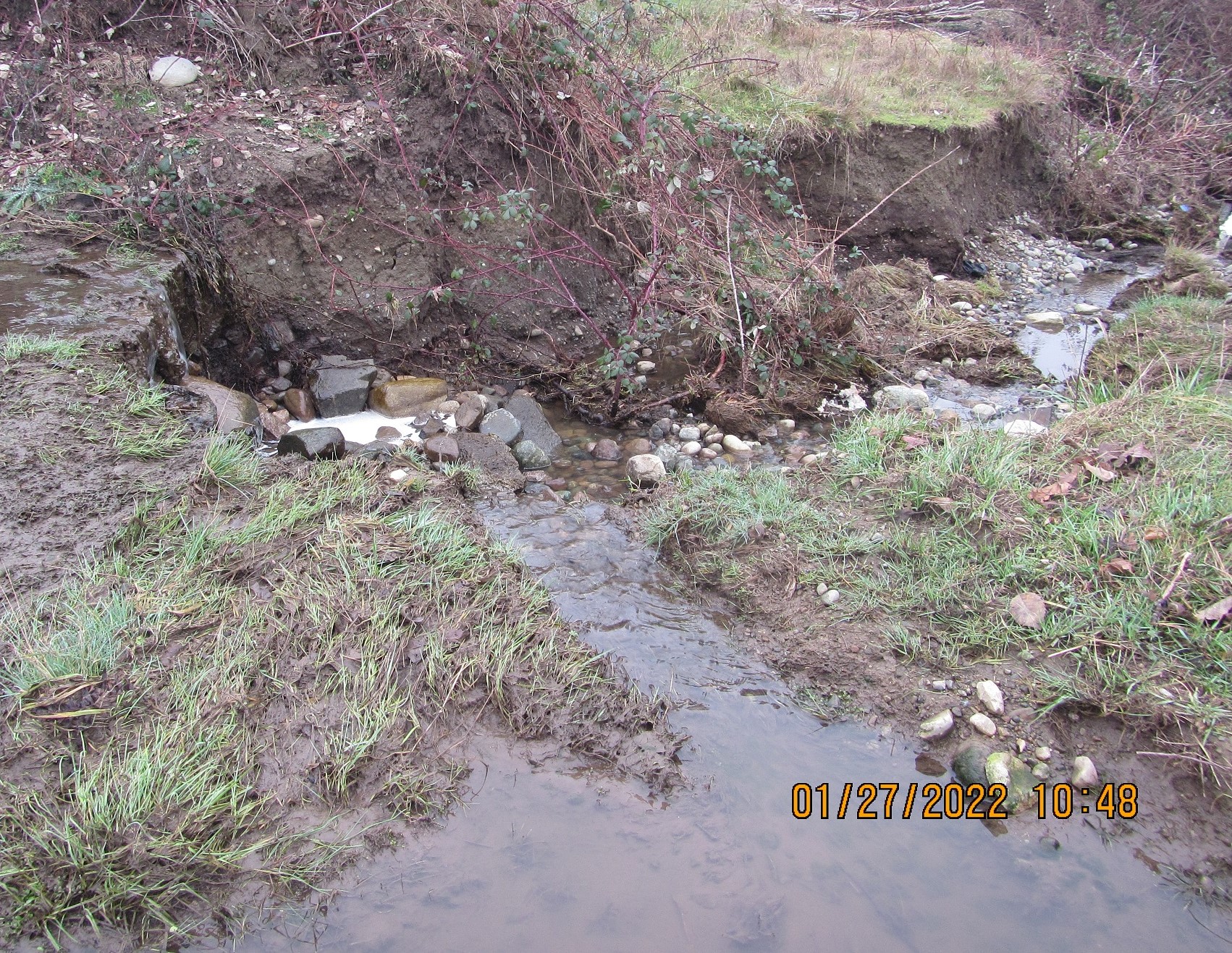
The water rose so high that it jumped a low spot in the creek upstream of the culverts and broke through the ridge creating the erosion gully seen in the left-hand photo. About half the flow bypassed the creek and flooded the fields on Shelly Farm bringing with it soil and rock from the ridge. The rock reduced the area that could be used for pasture and growing hay.
A result of the wide-spread flooding caused by the 2021 atmospheric river was the 2021 Canada-British Columbia Flood Recovery Program for Food Security which provided one-time funding for uninsurable infrastructure repair and cleanup costs for eligible farmers impacted by flooding. The repair of the erosion gully and installation of a new culvert met the eligibility criteria for Flood Recovery funds which were received by Murray Laplante on behalf of Shelly Farm.
Since the culvert was being installed into a fish bearing creek, the project had to be designed by engineers and approved by Department of Fisheries and Oceans (DFO) and Province of BC. Plus, the work had to be overseen by Qualified Professionals. This increased the cost of the project beyond the Flood Recovery eligible funds. The Snaw-naw-as stepped up to complete the project in partnership with Murray.
DFO and the Province of BC required that the new culvert, along with its inlet and outlet channels, be capable of conveying the atmospheric rivers predicted to be coming our way with Climate Change in a controlled manner to prevent damage to the creek. The restoration work we completed downstream in 2021 included “boat ramps” which is a fancy term for low spots in the creek bank that are designed specifically for allowing flood waters to flow out of the creek during extreme rain events. This prevents blowing out the creek banks. The water flows back into the creek when the flooding recedes. This section of creek should be able to handle what the culvert sends it.
Andrew McNaughton, consultant for the Snaw-naw-as, coordinated the work with Koers Engineering, DR Clough Consulting, and Parksville Heavy Equipment, and completed the permitting process with the government. Snaw-naw-as Councillor and head of the Fisheries Department Brent Edwards, and Snaw-naw-as Councillor and Fisheries Technician Chris Bob, met with Murray on several occasions to discuss the scope of the project and determine what costs would be covered by the Snaw-naw-as.
The photos below, most of which were taken by Andrew McNaughton, show the great work conducted by Parksville Heavy Equipment.
![]()
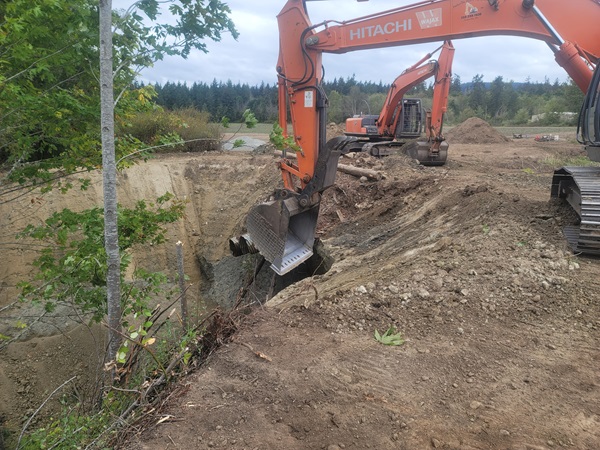
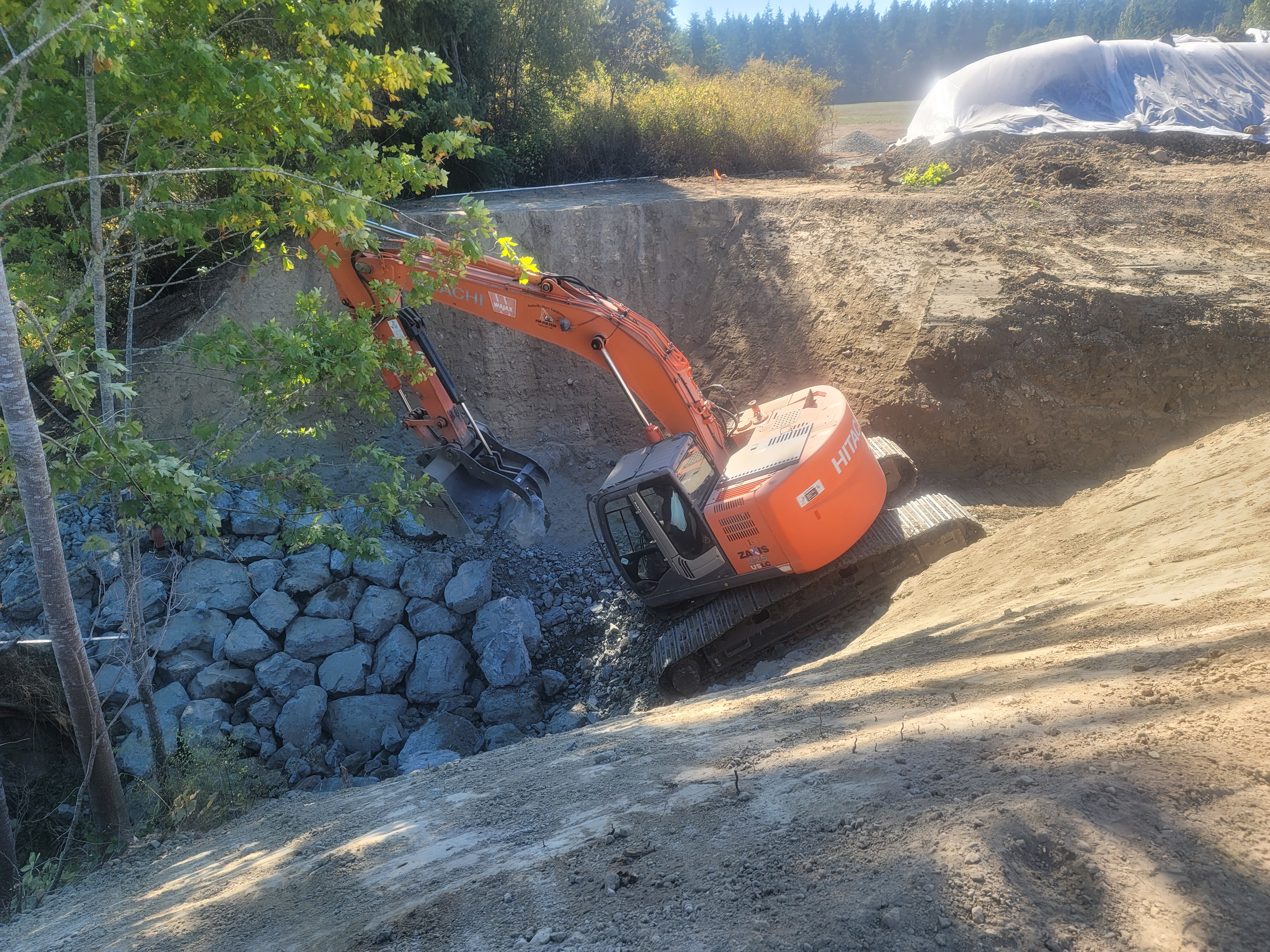
Digging out old culverts and constructing outlet channel Adding boulders to outlet channel for new culvert
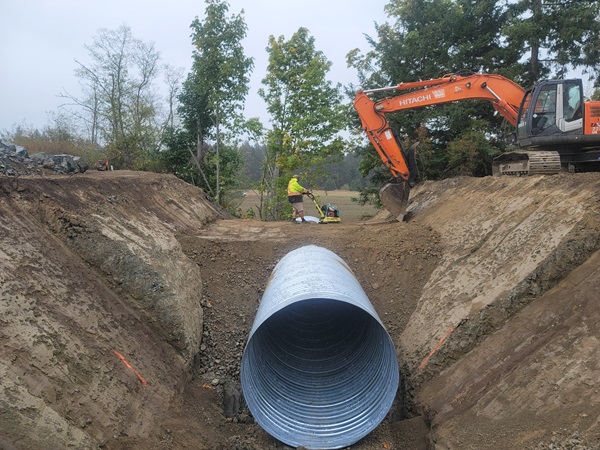
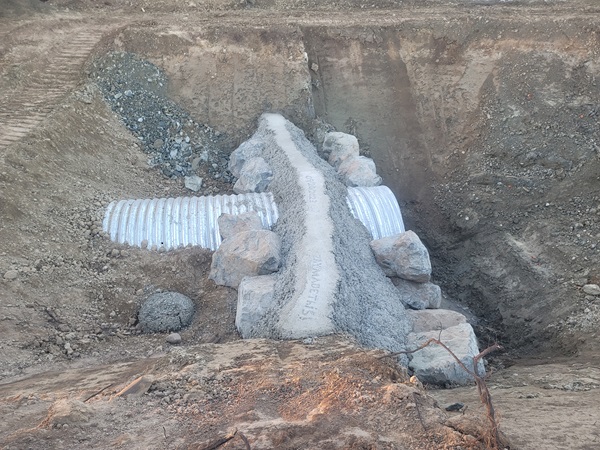
Backfilling culvert and compacting fill Construction of concrete plug for culvert
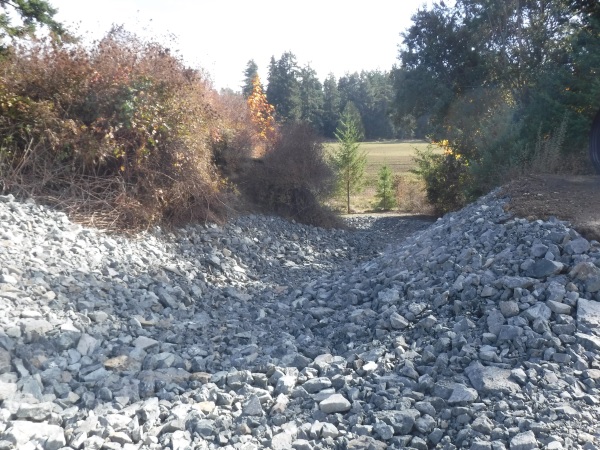
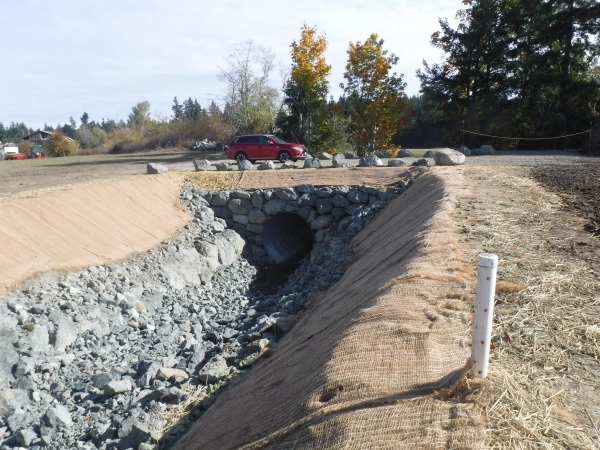
Inlet channel for new culvert Repaired erosion gully. Acts as emergency overflow
The next step is to restore fish habitat upstream of the culvert, especially the low spot, but that's for another day. Many thanks to the Snaw-naw-as and Andrew McNaughton who are our partners in fish habitat restoration, and Parkville Heavy Equipment for the excellent work they did. And of course, thanks to fish-friendly Murray Laplante who has been supportive of fish habitat improvements on Shelly Farm for several years and contributed Flood Recovery funds to this project.
Meanwhile......
The City of Parksville was removing an old culvert and replacing it with fish habitat. Blower Rd (off Stanford Ave in Parksville) ends about 30m before Shelly Creek, yet a culvert had been installed in the creek decades ago, the origin of which is unclear. The culvert was immediately upstream of some fish habitat restoration work we completed in 2015.
The culvert had not been installed properly and was impeding fish passage and creating sedimentation problems. In 2020, the City contracted Northwest Hydraulics Consultants Ltd (NHC) to assess the culvert and develop mitigation options. The photos below are from the NHC report and confirmed our concerns.
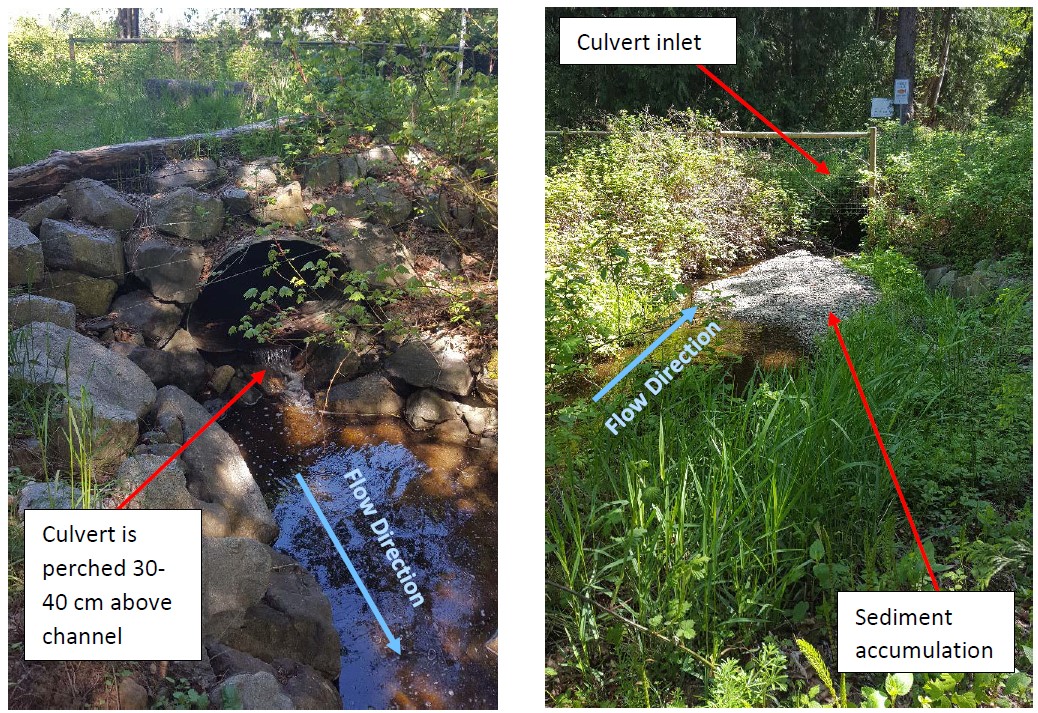
We were very pleased the City chose the option of removing the culvert. NHC was hired by the City to design and oversee the work. Our biologist, Dave Clough, and MVIHES volunteer, James Craig, worked with NHC on the design of the instream fish habitat and riparian planting program. Magnum Project Management conducted the earthworks seen in the photos below. Most of the photos were taken by Robert Downs from the City of Parksville.
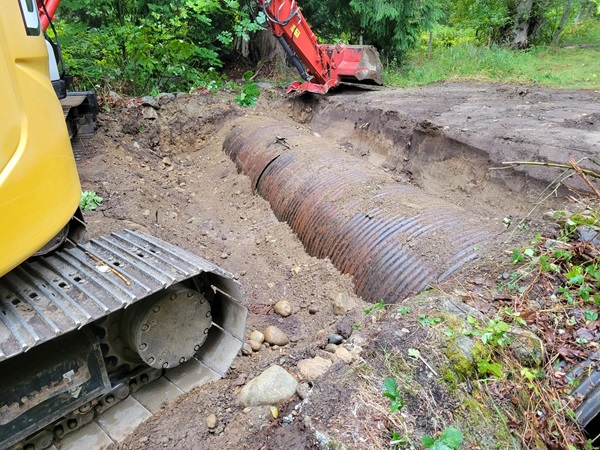
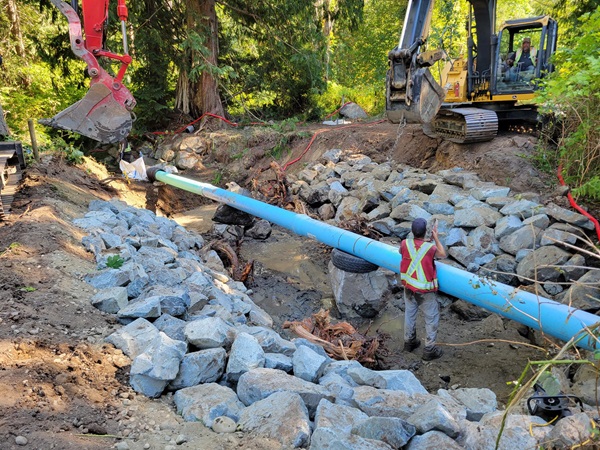
Removing old culvert Pool lined with rock. Blue pipe allows creek flow to bypass construction zone
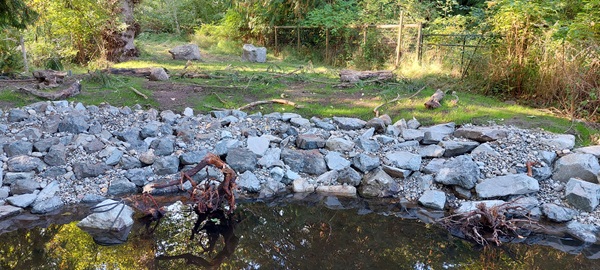
Pool with large woody debris. The fish are gonna love it!
The next step was the riparian planting which included the following species purchased by the City from Streamside Native Plants and delivered by Robert Downs:
Stakes:
- Pacific willow: 15
- Scouler’s willow: 15
- Hooker’s willow: 15
- Sitka willow: 15
- Red osier dogwood: 50
Upland plants (1 gal):
- Douglas fir: 10
- Western red cedar: 10
- Dull Oregon grape: 5
- Red osier dogwood: 10
- Salmonberry: 15
- Pacific ninebark: 15
- Sword fern: 5
Planting was scheduled for October 18 but was postponed to October 20 because of the heavy rain on the 18th. MVIHES volunteer, Shelley Goertzen, went to the site in case people showed up and a good thing she did. Four very hardy volunteers who had not seen the email postponing the planting to October 20, along with Dave Clough who was not sent the email (oops), showed up. Luckily the rain subsided enough for them to drive the willow and dogwood stakes into the ground at the creek edge. Dave Clough distributed the potted plants around the site for the second planting session on October 20, when the rest of us showed up.
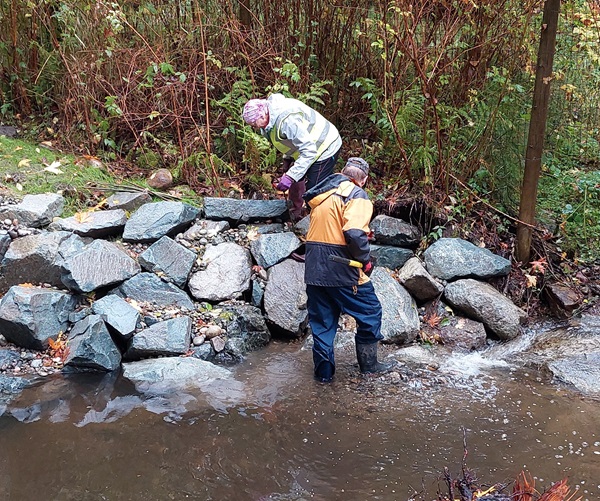
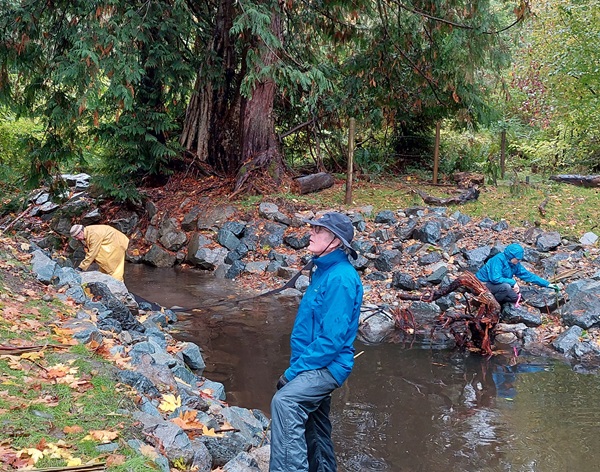
Planting willow and red-osier dogwood stakes into the creek bank
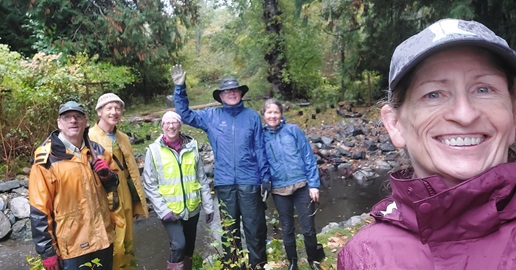
The Hardy Gang. Left to right, Chris Smith, Dave Clough, Barbara Wildman-Spencer, Tom Whitfield, Deidre Howie, Shelly Goertzen
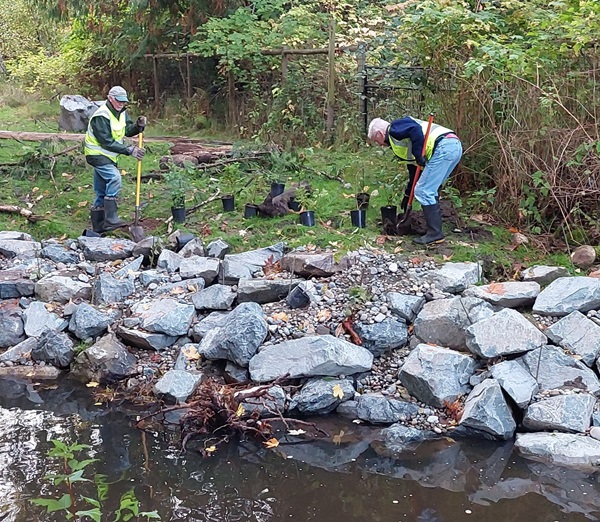
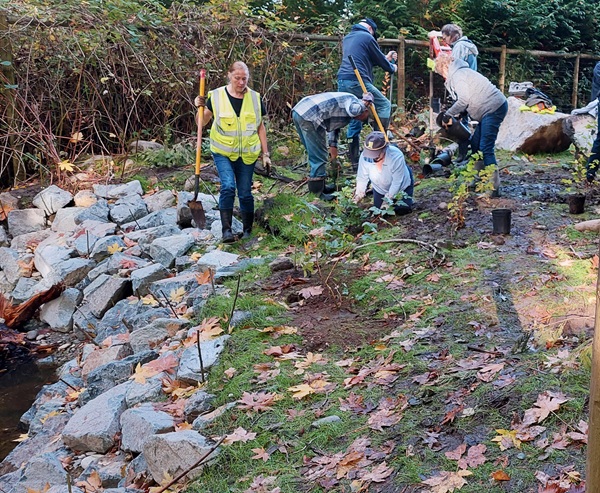
Planting the potted plants And some more
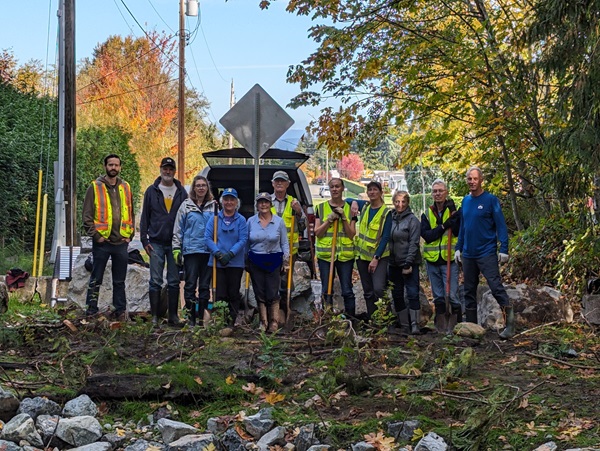
The ones who got the email. Left to right, Robert Downs, Kerry and Marilyn Foster, Jo McIlveen, Barb Riordan, Doug Herchmer, Maggie Estok, Shelley Goertzen, Cathy Kuntz, Martin Yeo, William Kuntz.
Thank you to all our volunteers. And many thanks to:
Nathan Valsangkar and Evan Arbuckle of Northwest Hydraulics Consultants Ltd.
Robert Downs, Engineering Technologist, City of Parksville
Shawn Bowen, Director of Engineering and Technology, City of Parksville
Joe Doxey, Manager of Infrastructure, City of Parksville
Dave Clough, DR Consulting
